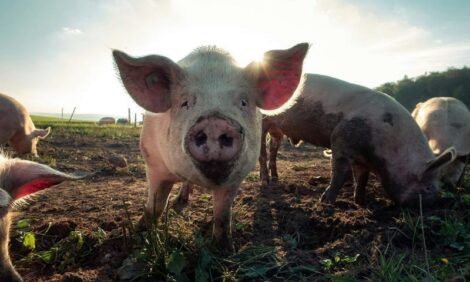



Pressure Washing
Tips on how to achieve high standards of cleaning and disinfection from BPEX in Work Instruction series (No. 5).A consistently high standard of cleaning and disinfection (C&D) is an effective way to
break the on-farm cycle of re-infection with infectious diseases.
Using a pressure
washer reduces water usage and enables efficient and effective cleaning of buildings
and equipment, especially when combined with other cleaning products, such as
detergent or disinfectant solutions.
| Equipment/info required | Personal safety |
|---|---|
| Suitable pressure washer | Ear protection |
| Detergent, where used | Eye protection or face shield |
| Disinfectant, where used | Protective gloves |
| Pressure Washer Manufacturers Operators Manual | Waterproof clothing and slip-resistant boots |
| COSHH data sheets | Where chemicals are used, appropriate clothing/equipment as stated on the COSHH data sheets |
| Product data sheets | |
| BPEX Action for Productivity 10 |
Pre-use Check
- Remove animals and any remaining feed and sweep up any large debris from the area to be pressure-washed
- Dismantle any movable equipment such as hoppers and remove from the area
- Cover any electrical equipment that cannot be removed, such as sockets, meters, fan units, lighting fixtures and isolate the electrics
- Close all nearby windows and doors
- Set up barriers and warning signs as necessary
You must understand the operating instructions, precautions and safety measures, before attempting to operate the pressure washer.
Preparation
- Put on the necessary protective clothing
- Make up any detergent or disinfectant solutions in accordance with manufacturer’s instructions
- Place the pressure washer on a stable surface
- Check the pressure washer and attachments for any signs of damage, wear and tear before connecting up the hoses and water supply
- Replace any damaged or worn parts before starting to use the pressure washer
- Straighten any kinks in the hoses
- Add the detergent to the chemical reservoir as directed by the manufacturer
- Connect and turn on the water supply before running the power washer
- Keep the high-pressure hose connected to both the pump and the spray gun at all times while the system is pressurised.


Expected standards of cleaning
Outline of Work
Follow the five basic steps of cleaning and disinfection as outlined in Action for Productivity 10.
- Maintain a stable stance, firmly grasping the spray gun with both hands, pointing the spray gun away from the body at all times when the pressure washer is switched on
- Adjust the pressure as required by adjusting the distance, spray pattern or adjustable pressure regulator, if appropriate
- Use an extension lance to pressure wash high areas
- Apply water/detergent mix for soaking at low pressure (e.g. 300 psi), using a wide spray pattern
- Allow to soak for at least 30 minutes but do not allow the surfaces to dry out
- Empty the chemical reservoir and take up pipe and flush with clean water
- After soaking, wash the area and any remaining washable equipment at high pressure (e.g. 500 psi), preferably using hot water
- Start pressure washing from the top and work downwards, ie ceilings walls floor and from one end of the area or room to the opposite end
- Wash out any accumulations of dirt that may build up on ledges, in corners, on slats and brush out where necessary
- Fill the chemical reservoir with disinfectant at the recommended dilution rate
- After washing, apply appropriate disinfectant through the pressure washer in accordance with manufacturer recommendations using cold water
- Apply the disinfectant evenly and thoroughly using low pressure and a wide spray pattern
When shutting down the pressure washer, remember to:
- Empty and flush the chemical reservoir and injection system with clean water, to prevent any risk of cross-contamination
- Turn off the water supply and power, and then press the trigger on the spray gun to relieve the pressure trapped within the system
- Disconnect all hoses and attachments checking for signs of wear and tear. Ensure any damaged or worn parts are repaired or replaced before next use
- Store the pressure washer and attachments in a cool, dry place
- Rinse the protective equipment used with clean water
Remember the high pressure stream of water can cause serious injury and damage.
Precautions
- Do not spray directly at electrical wiring, power sources, windows, glass or fragile objects
- Avoid using a pressure washer from a ladder, scaffolding, or any other unstable position
- Never aim the nozzle at yourself, other people or animals at any time or allow children to operate the pressure washer
- Do not secure the trigger in the open position or leave the pressure washer unattended while it is running
Maintenance
- Maintain the equipment in effective and efficient working order as per the manufacturers recommendations
- Keep a maintenance log
- Do not use the pressure washer if any parts need repair or replacement
October 2012






